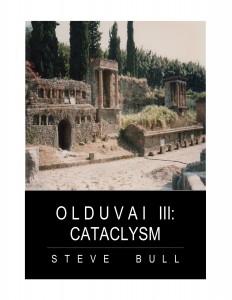Home » Posts tagged 'clean energy'
Tag Archives: clean energy
The Bulletin: September 24-30, 2025
The Bulletin: September 24-30, 2025 This past week’s articles of interest… CLICK HERE If you’re new to my writing, check out this overview. The Terracotta Pot Heater: A DIY Guide To Cozy Emergencies ‘Families are dying’: an Ohio town suffering from fallout years after nuclear plant’s closure | US news | The Guardian Confronting devastating […]
Today’s Contemplation: Collapse Cometh CCXIV–We’re Saved! Solar Photovoltaic Panels.
Today’s Contemplation: Collapse Cometh CCXIV–We’re Saved! Solar Photovoltaic Panels. CLICK HERE If you’re new to my writing, check out this overview. Recently, a member (JS) of a Facebook Group (Peak Oil) I am a member of posted a graph (see above) of the massive increase in the energy supplied by solar photovoltaic panels and led […]
The Bulletin: June 5-11, 2025
The Bulletin: June 5-11, 2025 This past week’s articles of interest… CLICK HERE If you’re new to my writing, check out this overview. In the Sightlines of Empire: The Gift and Curse of Thermal Optics The Superfood That Replaces Every Toxic Oil in Your Kitchen Why Analysts Misjudge Oil’s Future | Art Berman CO2 […]
Today’s Contemplation: Collapse Cometh CCV–Do You Believe ‘Renewables’ Are ‘Clean’ And Can ‘Save the Planet’?
Today’s Contemplation: Collapse Cometh CCV– Do You Believe ‘Renewables’ Are ‘Clean’ And Can ‘Save the Planet’? Photo by author. CLICK HERE If you’re new to my writing, check out this synopsis. While carrying out some research on one of Canada’s big players in the environmental ‘protection’ racket (Environmental Defence Canada (EDF)), I posed some questions to […]
Today’s Contemplation: Collapse Cometh CXCII–Sorry, folks, but ‘renewables’ are NOT going to save humanity or the planet.
Today’s Contemplation: Collapse Cometh CXCII–Sorry, folks, but ‘renewables’ are NOT going to save humanity or the planet. Tulum, Mexico. (1986) Photo by author. In a truly stereotypical Canadian way, I begin with an apology to those who might disagree with or be affronted by what I am about to argue… I’m sorry, but non-renewable, renewable […]
Today’s Contemplation: Collapse Cometh LXXXVII–Limitless, ‘Clean’ Energy: More Magical Thinking
Today’s Contemplation: Collapse Cometh LXXXVII December 29, 2022 (original posting date) Chitchen Itza, Mexico. (1986) Photo by author. Limitless, ‘Clean’ Energy: More Magical Thinking A brief contemplation that shares my comment on the latest post by The Honest Sorcerer regarding the recent fusion energy ‘breakthrough’ that has been making the rounds on many media sites. My current […]
Today’s Contemplation: Collapse Cometh LXXX–Ignoring Ecological Systems Destruction
Today’s Contemplation: Collapse Cometh LXXX November 28, 2023 (original posting date) Chitchen Itza, Mexico. (1986) Photo by author. Ignoring Ecological Systems Destruction This contemplation shares a response of mine to another within an ongoing discussion regarding a Facebook post by Clean Energy Canada[1] highlighting one of Canada’s major energy companies’ offshore wind farm projects. This ‘think tank’ […]
Climate change is a Narrow View of the Human Predicament
Climate change is a Narrow View of the Human Predicament A transition away from fossil fuels seems like a sensible approach to climate change but what are the correct ingredients? Wind, solar, hydrogen, electric vehicles, carbon capture, nuclear, geothermal, heat pumps, hydropower? It’s like a doctor treating a patient without examining the source of his […]
Today’s Contemplation: Collapse Cometh CLXXIV–To EV Or Not To EV? One Of Many Questions Regarding Our ‘Clean/Green’ Utopian Future, Part 2.
Today’s Contemplation: Collapse Cometh CLXXIV Knossos, Greece (1988). Photo by author. To EV Or Not To EV? One Of Many Questions Regarding Our ‘Clean/Green’ Utopian Future, Part 2. In Part 1 of this two-part Contemplation I argue that the recent trumpeting of electric vehicle (EV) car sales as a prologue to their imminent mass adoption and possibly […]
Today’s Contemplation: Collapse Cometh XXIII–‘Clean Energy’ and the Stages of Grieving
Today’s Contemplation: Collapse Cometh XXIII Tulum, Mexico (1986) Photo by author ‘Clean Energy’ and the Stages of Grieving Today’s thought was motivated by another Tyee article that carries on the notion of ‘clean energy’ and the ‘magical thinking’ needed to buy into such narratives. As long as language is being manipulated (e.g., ‘clean energy’ is a […]
I Warned Against the Green Energy ‘Boom.’ It Sparked Debate
I Warned Against the Green Energy ‘Boom.’ It Sparked Debate Challengers raised points that merit responses. Mine lead to one answer: degrowth. Mining for rare earth metals for ever more battery-driven gadgetry is a vastly destructive and ultimately doomed response to the climate crisis argues the author. Photo via Shutterstock. The best intentions in the world […]
The Green Transition is Physically Impossible
The Green Transition is Physically Impossible
The Illusion of Debate
The Illusion of Debate Hanging Rock, Madison, Indiana I want to disclose a couple of facts regarding the constant focus in many people’s minds of what is considered healthy debate about “renewable,” “clean,” “green,” and “sustainable” energy, electricity, technology, and/or products and services. Those labels are marketing terms, not reality. In other words, they encourage […]



